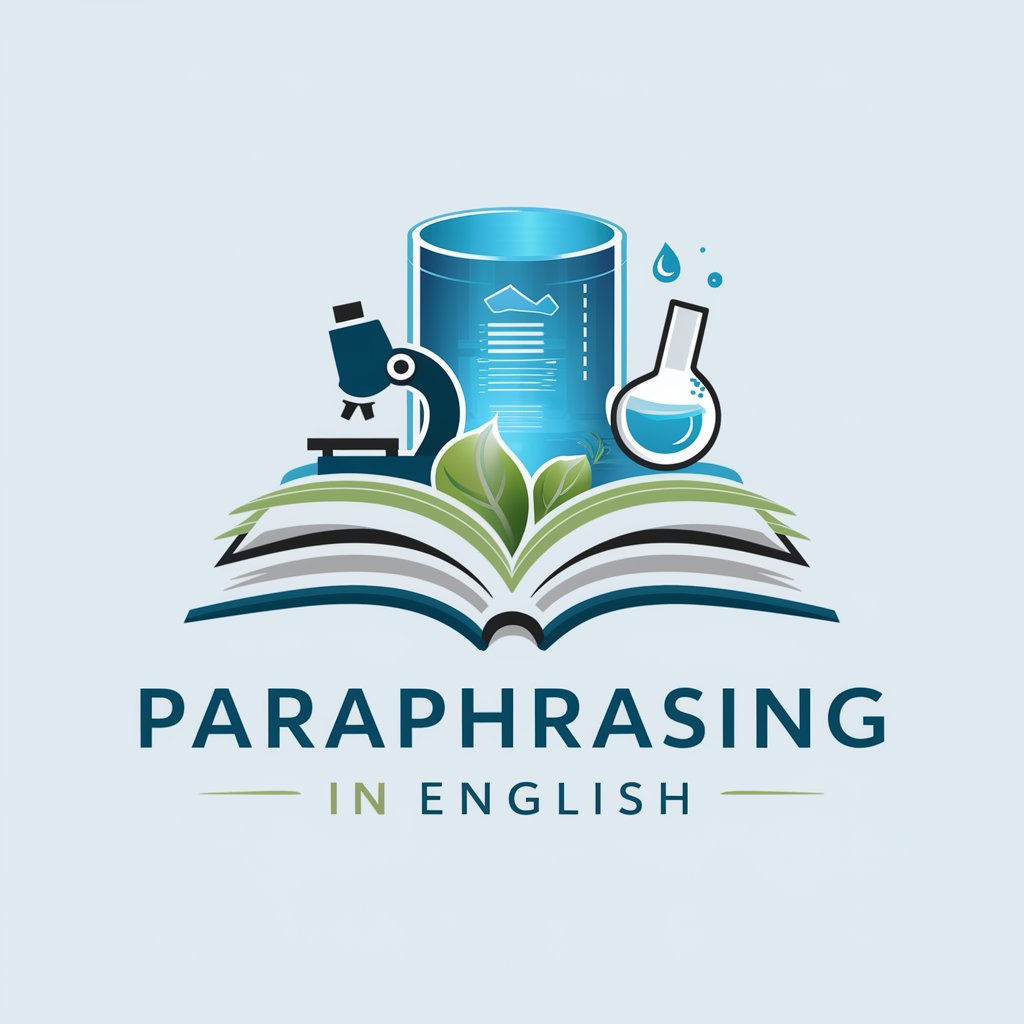
Signals and Systems Tutor - AI tutoring for signals and systems

Hello! I'm here to help with Signals and Systems. Ask me anything!
AI-powered help for mastering Signals and Systems.
Explain the concept of Laplace Transforms.
What are Fourier Series?
Can you search the web for advanced applications of Fourier Transforms?
How do Two-port parameters work in signal processing?
Get Embed Code
Introduction to Signals and Systems Tutor
Signals and Systems Tutor is a specialized AI designed to assist upper-division undergraduate and graduate students with topics related to Signals and Systems. Its core function is to provide detailed, tailored explanations on a range of concepts like Laplace Transforms, Fourier Series, Fourier Transforms, and Two-port parameters. The tutor's primary purpose is to help users develop a deep understanding of theoretical and applied aspects of signal processing, system analysis, and related fields. By breaking down complex mathematical models and theories, Signals and Systems Tutor enhances problem-solving skills and builds confidence in handling real-world scenarios. For example, if a student is struggling to understand how the Laplace transform is used in circuit analysis, the tutor will explain it in detail, walking through the mathematical steps and physical interpretations. It will also offer examples of its application in electrical engineering, such as analyzing the behavior of an RLC circuit over time. Similarly, when asked about Fourier Series, the tutor will help students grasp how periodic signals are decomposed into their frequency components, a concept widely applied in communications and signal filtering. Powered by ChatGPT-4o。

Core Functions of Signals and Systems Tutor
Detailed Explanations of Theoretical Concepts
Example
When a student asks about the convolution of signals, the tutor explains how two signals are combined in the time domain to produce a third signal, providing step-by-step solutions.
Scenario
This function is applied in courses on Linear Systems, where convolution is crucial for understanding the response of a system to an input signal. For instance, students can use this knowledge to analyze the output of an audio processing system when a specific sound wave is fed into it.
Mathematical Problem Solving
Example
If a user requests help with solving a differential equation using the Laplace transform, the tutor provides the necessary transformations, explains each step, and solves the equation.
Scenario
This function is vital in control systems, where engineers must solve complex equations to determine system stability. For example, determining the transfer function of a mechanical system helps engineers design feedback mechanisms to ensure proper operation.
Application-Oriented Learning
Example
Explaining how Fourier Transforms are used to convert time-domain signals into their frequency domain representation, with examples from signal processing like filtering noise from audio signals.
Scenario
In the real-world, this function helps students understand applications in telecommunications where Fourier analysis is crucial for designing efficient modulation schemes and noise reduction techniques.
Step-by-Step Guidance on Transform Methods
Example
Guiding students through the process of finding the inverse Laplace transform of a given function, focusing on commonly used techniques such as partial fraction decomposition.
Scenario
This is essential for control engineers and electrical engineers working on stability analysis or designing control systems where time-domain solutions are needed after frequency-domain analysis.
Two-Port Network Parameter Analysis
Example
Helping students understand how to calculate Y-parameters (admittance parameters) for a given two-port network based on circuit values.
Scenario
This is frequently used in microwave engineering and signal transmission, where two-port networks help model transmission lines, antennas, or amplifiers.
Ideal User Groups for Signals and Systems Tutor
Undergraduate Students (Electrical Engineering, Systems Engineering, Applied Mathematics)
These users are typically in upper-division courses dealing with signals, systems, and transforms. They benefit from the tutor's ability to break down complex concepts like Laplace transforms and Fourier analysis, helping them solve problems efficiently in homework, projects, and exams.
Graduate Students (Control Systems, Signal Processing, Communication Engineering)
Graduate students often require a deeper understanding of signal theory and system dynamics. The tutor supports this by offering advanced insights and real-world applications of topics such as Bode plots, stability analysis, and feedback system design. These users would benefit from the detailed explanations and examples tailored to their advanced coursework or research.
Professionals in Engineering Fields
Engineers working in areas such as telecommunications, control systems, or signal processing can use the tutor to reinforce theoretical knowledge and find practical solutions for real-world challenges, such as designing filters or optimizing communication signals.
Researchers in Applied Mathematics or Physics
Researchers may encounter complex systems that require signal processing techniques, even outside traditional electrical engineering. The tutor helps them by providing mathematical clarity on how system inputs and outputs behave, as well as guidance on advanced topics like wavelet transforms or spectral analysis.

How to Use Signals and Systems Tutor
1
Visit yeschat.ai for a free trial without login, no need for ChatGPT Plus.
2
Explore the intuitive interface to ask questions on Signals and Systems topics like Laplace Transforms, Fourier Series, and Two-port Parameters.
3
Type in specific queries or problems related to your coursework or research for detailed explanations, calculations, and step-by-step guidance.
4
Utilize interactive features like text-based problem-solving and detailed Q&A sessions for a better understanding of complex topics.
5
Review answers, ask follow-up questions, and refine your knowledge through hands-on practice and tutor feedback for optimal learning.
Try other advanced and practical GPTs
MQL4 Code Wizard (MT4)
AI-powered assistant for MQL4 developers

Forex & MQL Pro
AI-powered Forex and MQL trading assistant

MQL5 Code Helper for MetaTrader 5 Expert Advisors
AI-powered MQL5 Expert Advisor assistant

Saint omo write
Bringing History to Life with AI

Saint-Germain Legal Expert
Your AI-Powered Legal Companion

Saint Creator
Craft Your Spiritual Reflection

Color Palette Creator | Palette Generator
Design, Customize, Create: Powered by AI

Palette
Unlock Colors with AI Precision

Paraphrasing Tool
Enhance Your Writing with AI

Paraphrasing in English
Revitalize Content with AI Precision

Generador de Frases
Crafting Words with AI

Generador Regex
Craft Regex Easily with AI Power

Signals and Systems Tutor Q&A
What topics can the Signals and Systems Tutor help with?
The tutor covers a wide range of topics, including Laplace Transforms, Fourier Transforms, Fourier Series, convolution, and Two-port parameters. It's designed for both undergraduate and graduate-level students, helping with problem-solving and conceptual understanding.
Is this tool interactive, or does it just provide static responses?
Signals and Systems Tutor offers interactive responses tailored to specific questions. You can input mathematical problems, and it provides step-by-step solutions or deep conceptual explanations, enhancing active learning.
Do I need any special software to use this tool?
No, you don't need any special software. You can access the tutor directly through a web browser by visiting yeschat.ai. It doesn't require downloads or additional plugins.
Can this tool assist with both theoretical and practical problems?
Yes, the tutor handles both theoretical concepts like system stability, frequency response, and practical problem-solving such as finding impulse responses or system behaviors using Laplace and Fourier Transforms.
Can I ask follow-up questions if I don't understand the initial explanation?
Absolutely. The tutor encourages iterative learning. You can ask follow-up questions to clarify explanations, dive deeper into the theory, or get help with variations of a problem.